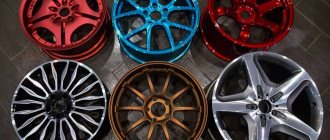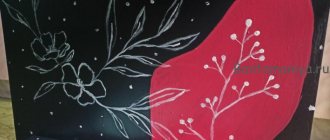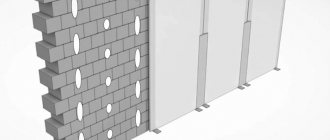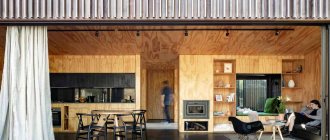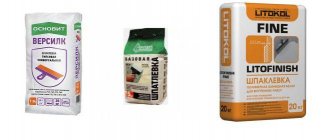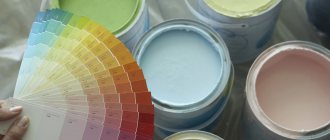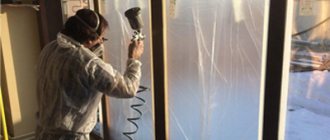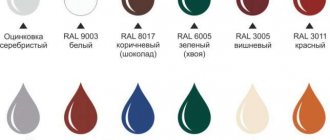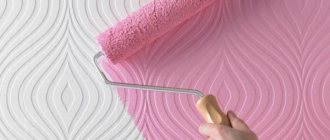What is chalk paint made of?
Making scuffs, darkening, and disguising furniture as antique is not an easy task. Some masters can't even do it. You can achieve your goal by choosing original quality chalk paint.
The options available on the market make you at a loss with the choice. The products differ from each other both in color shades and different component compositions. Some paints contain more chalk, others have additional components.
In addition to water and chalk, modern chalk paints can have the following components:
- Plant and synthetic resins;
- Silicate additives;
- Linseed oil;
- Casein.
Depending on the component composition, chalk paints have corresponding names. How great furniture or other accessories treated with paint will look depends on the quality of the material used and the condition of the furniture.
For example, little-used furniture can be transformed by treating it with medium-quality chalk paint.
In places with high humidity parameters and when working with water (kitchen, bathroom), professionals recommend paying attention to chalk paint that is resistant to temperature changes.
Components for preparing chalk CM
The main component is a ready-made composition based on acrylic or latex (“Star”). In most cases it is acrylic material. It is the core for all types of chalk compositions.
- The filler creates the bumpiness of the coating. The following are used: stone chips, quartz dust, synthetic fibers and other components that can create relief on the surface. The size of the particles used is taken into account: coarse filler up to 2 mm; medium particle size – up to 1 mm, fine-grained crumb – less than 0.5 mm.
- To prevent the acrylic base from drying out quickly during work, which is not always good for decoration, a drying retardant is introduced into the solution.
- To enhance the tenacity of the chalk dye, a fixative is added to the base. It increases the chalky effect of the base.
- Putty, gypsum, and grout can increase the resistance of the coating to mechanical stress.
- The solvent achieves the desired viscosity of the material. For acrylic and latex, the solvent is water.
Chalk dye can be applied with any painting tool. The choice depends on the viscosity of the dye.
Characteristics of chalk paints
Along with different component compositions, chalk paints have common characteristics that are important for obtaining the desired result.
The main ones are:
- Excellent adhesion parameters;
- Matte;
- Short drying time;
- Environmental Safety;
- Ease of use.
An important characteristic due to which the material is in demand and popular among users is the safety of the building material for the human body. The paint does not emit harmful substances and is approved for use in children's bedrooms and crowded places.
Working with chalk paints is not inherently difficult. The main thing is to choose the right material and have a little imagination.
Using chalk paint in the interior
Chalkboard paint is used very widely. Thanks to its safety, it can be used in children's educational institutions and not only for coloring blackboards on which you can draw with chalk. This type of paint is also used in cafes and offices for writing notes. At home, the material can be applied to walls in different rooms. It is especially popular in the children's room and kitchen.
Helpful advice! Manufacturers of slate paints recommend washing the surface with exclusively clean water during the first month. Next, you can use chemical detergents, but without aggressive additives.
A slate wall in a nursery is an ideal space for a child’s learning and creative development. Children will not want to paint the walls in other rooms, having their own spacious “testing ground” for creativity. Older children can use the wall to memorize various educational material, for example, formulas, rules, tables.
Related article:
Cork board on the wall: a universal organizer for the whole family
Purpose, scope of application. Wooden and magnetic marker options, types of structures. Products. Making boards with your own hands.
In the kitchen and hallway, slate paint is usually used partially - to cover individual areas or interior items. A kitchen apron with this coating is popular: here you can write down recipes, grocery lists and menus for the day. Some types of paint can change color when heated or exposed to hot temperatures. This should be taken into account when organizing repairs. Individual items decorated with slate paint look beautiful. For example, cabinet doors, a bar counter, or even boxes for storing bulk products or flower pots.
The most popular place to use slate paint in the interior is the children's room.
In the hallway, paint is usually applied to the area near the front door in order to apply various notes and reminders to each other.
Scope of application of chalk paint
Chalk paint is a building material for modifying wooden, metal, leather, fabric and other surfaces.
Important! If you have no experience working with chalk paint, it is recommended to consult a specialist before choosing a building material. An incorrectly selected option can ruin your mood and distance you from your desired goal.
Chalk paint for fabric
You can protect the fabric surface from rapid contamination, abrasion and other types of damage by covering the fabric with chalk paint and wax. When applying paint, it is important that it saturates the fabric. If the matter is structural, the impregnation time will increase slightly.
Dyeing the fabric using a spray bottle will help speed up the process. The step-by-step process looks like this:
- Chalk paint is diluted with water according to the manufacturer's recommendations;
- The product is applied to the fabric surface in 2 layers, the interval between each is 60 minutes;
- After a day, the surface is covered with wax using a brush.
Carefully applied wax emphasizes the depth of the color shade and makes it more pronounced.
Important! Before using furniture, make sure the surface is completely dry. Deep stains of paint remaining on it are a defect and can ruin the wearer's clothing. For these reasons, if you lack experience, you should entrust the work to professionals.
Chalk paint for art painting
Modern materials are used both for decorating furniture and other antique surfaces, and for artistic painting. If there are boring accessories in the house, a user with imagination can give them a second life.
The correct use of abilities will make the furniture unique and emphasize individual style. Hand-painted furniture is valued on the market for goods and services; its cost is no cheaper than rare options.
Features of the material
Ready-made chalk paint can be bought at hardware stores, but it is much more convenient and profitable to prepare such a composition yourself.
Most often, the cans indicate that the surface does not need preparation, that is, there is no need to remove the old coating, putty or prime. But, as practice shows, the paint will not always stick and adhere well. Therefore, at least minimal preparation will have to be done.
The most important requirement for the surface to be painted: it must be cleaned of dirt and dust, and degreased. If we are talking about laminated furniture, then at a minimum you will have to wipe it with gasoline or a soap solution (possibly with dishwashing detergent). If a wooden base is to be painted, then you will also have to putty all the existing depressions and flaws.
Before you decide to remodel furniture using chalk paint, it is worth studying some of the features of its use:
- The paint itself dries very quickly, so you will have to work at an accelerated pace;
- After drying, the surface can not only be wiped with a damp cloth, but also washed;
- The material is considered fireproof and can be used for painting walls or furniture in any room;
- Despite the paint’s resistance to abrasion, it is still afraid of strong mechanical influences: just like any other, the surface can be scratched by sharp and hard objects;
- After painting, it is better to protect the surface with wax.
The most popular use of chalk paint among designers is to give antique effects to furniture, doors and other interior elements. For complete coverage, paint is applied in at least two layers, or even three.
How to make your own chalk paint
You can get high-quality chalk paint and be confident in the results by producing the material yourself. If you have enough time, desire and care, making a product is not difficult.
For this you will need:
- Water;
- Gypsum;
- Capacity;
- Tool for stirring the material;
- Acrylic paint (not emulsion);
- Spoon.
Gypsum is poured into a pre-prepared container (the amount should be no more than 3 parts of the volume of the container). A small amount of water is added. The consistency of the mixture should resemble thick sour cream.
To avoid lumps, the future paint should be thoroughly mixed with a spoon at each stage. Acrylic paint is added to the top of the container and mixed with the rest of the components. The remaining plaster is carefully removed from the edges, and any lumps are stirred. The paint is ready to use.
In order not to be disappointed in the characteristics and color shades, before applying the material to furniture, it is recommended to test the product on an inconspicuous or unnecessary area.
how to paint furniture
Repainting old and worn-out furniture can solve several problems at once:
- refresh the interior (which is logical);
- combine disparate objects into a single ensemble (for example, if you are a young family, and the only furniture you have is what you inherited, or else, in your dacha, individual objects from different eras often accumulate that need to be somehow made to work together);
- give vent to your creative energy (the most important thing, I think).
Well, if you do everything right, then no drama will happen, even if you don’t like the result - you’ll just choose a new shade and can paint the furniture again when you have a couple of hours of free time again.
Interesting facts about chalk paint
Many manufacturers write on packages of chalk paint: “The material can be used without prior surface preparation.” In reality and in practice, the information is not entirely correct.
You can achieve your goals with careful preparation of the foundation. Cleaning and degreasing surfaces helps to get better results.
Surface preparation allows you to find imperfections in the form of dents, unevenness and other problems. Puttying and leveling makes them invisible, and further work with paint is of high quality.
How ideal the effect of aging or abrasion of furniture will be depends on the degree of wear of the product and the type of previous coating. If the first attempt does not produce a satisfactory effect, re-coat should be applied. As a rule, it gives positive results.
Rules for using graphite paint: preparation and painting
The main feature of working with graphite paint is its ease and ease of application. There is no need for special knowledge, experience or special professional tools. It is enough to purchase a regular painter’s kit, which includes:
- paint tray;
- brushes of different types;
- construction roller.
Before starting work, surfaces that are not to be painted should be thoroughly covered with cellophane film, since even with all the care of application, drops may get on the floor, which are very difficult to remove. To protect against paint, cover window sills, window frames and doors with paper tape.
Graphite paint hardens very quickly, so it must be applied very carefully.
The wall to be painted must be carefully leveled:
- remove old paint and wallpaper;
- remove old peeling putty material and apply a new layer;
- coat the surface with primer.
If the wall is old, then it is best to completely remove the worn putty and re-putty the surface, and then apply a primer that is suitable for this type of paint. Only after this procedure can you start painting.
The surface painting itself is very simple. The main thing is that the base for application is clean, free of dust and dirt. The paint must first be thoroughly mixed and then poured a little into a special tray or other container, as it hardens quickly. Next, taking a small amount of product with a roller or brush, distribute it on the surface. After two hours, the second layer is applied. You can draw and write on a slate board after three days.
The magnetic coating after slate paint is applied a day later, if the iron-magnetic powder has not yet been added to the composition of the paint and varnish.
Three days after application, you can draw and take notes on the slate coating
Photo of chalk paint
Color selection
Look carefully at the item and think about where exactly you want to fit it - the choice of color depends on this.
You can choose a shade that contrasts with the main color scheme (for example, in a room with a beige-warm palette, you can put a table painted bright blue - it will enliven the interior with a color accent), or neutral (for example, you can paint an old table and chairs in white color, and place a beautiful vase with bright flowers on it).
LiveInternetLiveInternet
Quote from Olga-V's message
Read in full In your quotation book or community!
The secrets of homemade chalk paint.
Author Oksana's Home Workshop
Author: The idea to create chalk paint belongs to British designer Annie Sloane. “Chalk” is essentially a literal translation of the “Chalk paint” brand. The designer gave this name because of the velvety matte surface that is obtained after painting. The paint is opaque, adheres well to the surface, pleasant, velvety to the touch.
There is only one problem - the original chalk paint “Chalk paint” is not sold in Russia, but similar ones are quite expensive and if you use several colors for painting, it will cost a pretty penny (families with a mortgage and a mother on maternity leave will understand me). Therefore, there is only one way out - to make homemade chalk paint.
There are a lot of recipes published, the only question is which one is the best, closest to the original?
I've been wondering for a long time: does chalk paint actually contain chalk? Even when publishing the master class, furniture restorers told me that chalk paint contains calcium carbonate. To clarify the controversial point, I turned directly to Svetlana Shamshina, who has been working with Chalk paint for many years. So, it turns out that no one knows exactly what components the original chalk paint consists of. The manufacturer carefully protects its recipe. Therefore, all homemade chalk paint recipes have their place, not necessarily with chalk.
What are the advantages of chalk paint?
Firstly, preliminary surface preparation, grinding, and priming are not so often required. Only if the surface has a glassy varnish coating or is heavily soiled, or has defects or scratches. In all other cases, in principle, you can paint it as is.
Secondly, the paint is easy to work with - it dries quickly and applies to almost any surface: metal, glass, wood, ceramics. I tried painting glass jars, great results.
Thirdly, the paint is very opaque. I had a terrible, completely black table, I repainted it in three layers of blue chalk paint of my own making. The paint perfectly covers the horrors of the old coating.
Fourthly, the paint is practically odorless and non-toxic.
Based on these parameters, I began to experiment with various recipes that were published on the Internet on Russian and foreign sites.
Summarizing all the recipes, we can highlight the main components of homemade chalk paint:
1. Water-dispersion paint (latex or acrylic).
Having studied the compositions of latex and acrylic paints for walls and ceilings, interior, interior and exterior, I came to the conclusion that the compositions of the paints are largely similar.
In any case, there is no fundamental difference for preparing homemade chalk paint. Latex paints are formulated with styrene butadiene or acrylic copolymer (most commonly).
Be careful with carbonate fillers. There are latex paints for ceilings. Acrylic paint contains an acrylic copolymer as a base. The main thing is that it is just paint, and not two in one with a primer or some other filler.
2. “Fixing” component.
This can be grout for narrow joints (Ceresit is most often used), gypsum, some even use plaster.
The main purpose of all these materials is to add strength to the paint, create a “chalky” effect and provide good adhesion to the surface of the product. Water-dispersion paint gives elasticity, and the fixative gives strength.
3. Water.
Used to dilute the “fixer”. The more water, the thinner the paint will be.
In addition to these components, recipes recommend adding tooth powder (preferably without additives), soda, and starch. But they only add roughness to the painted surface and you can add them if you use washable paint, which creates a durable coating even without plaster or grout.
Now I want to talk about how I experimented with different compositions of chalk paint and what came out of it.
Recipe based on latex paint and grout.
This is the most common recipe, which unfortunately did not work for me.
You will find it in the book by S. Shamshina. I bought the first latex paint I came across, domestic from a Nizhny Novgorod manufacturer.
Back then I didn’t really delve into the composition of the paint. I only came to my senses when my chalk paint, made exactly according to the recipe, turned into a lump.
As it turns out, my latex paint contains calcium carbonate. Many, very many.
If it is diluted with water, it becomes loose, brittle, and is washed off with varnish.
They immediately did not get along with the grout. There's nothing you can do, don't throw away 3 kg of paint.
And I found a use for it - you can beautifully emphasize the structure of wood in products.
True, I strengthened it a little - I literally added a spoonful of acrylic matte varnish to the composition and the paint stopped peeling off. Here's how I used it on a key hanger.
Apply paint to a brushed wooden surface, dry it, pass it with a soft sanding sponge and wipe it with a dry cloth. After this, apply matte acrylic varnish and dry. Apply a layer of lighter paint on top, dry and lightly erase with a sponge again. At the end we coat it with a matte finishing varnish.
The effect of an old, time-worn tree is created. Working with paint is easy and requires almost no effort.
Recipe based on latex paint and plaster.
I used the same latex paint for the ceilings and plaster of paris for the kids' crafts. You often come across this recipe on the Internet. As in the first case, the paint did not work out for me; it also crumpled.
Here, in addition to the specific paint, not the best quality of gypsum was added.
But this time, if the clumped paint is diluted with water, it sticks to the surface quite well and hardly stains your hands if you run it over the painted surface.
To improve the composition, I decided to take better quality plaster and remembered that I had dry gypsum finishing putty at home. It is perfectly white, finely ground.
Having mixed the putty with water in a 1:1 ratio, I added the mixture to the tinted latex paint. It turned out to be a very good composition, the paint did not clump. The surface has become pleasant to the touch, the paint is opaque and practically does not rub off. I tried this paint when decorating key cabinets.
These were prefabricated models of quite impressive size and homemade chalk paint came in handy.
Recipe with acrylic paint and plaster.
This is the best recipe, in my opinion.
A very durable paint that is ideal for laminated surfaces and adheres flawlessly to glass. I took VGT brand exterior and interior acrylic paint and also added a mixture of water and gypsum putty.
After painting and about an hour after drying, the surface is perfectly decorated; you can sand it, wash it off, stick on napkins and prints. Just remember, after complete drying (24 hours) you get a very durable coating that practically cannot be sanded off. I used this paint to cover spice jars.
One jar somehow remained unclaimed, I decided to wash off the paint, but it didn’t work. You can only scrape it specifically.
Profile
Series of messages “Decoupage)) M.K.
chalk paint": Part 1 - Svetlana Shamshina "French Vintage". Part 2 - Testing chalk grout paint on old flooring. ... Part 12 - Inna Meirabyan decorating furniture with chalk paints. Part 13 — Webinar “Decor in French vintage style” with chalk paint from Oksana Loven Part 14 — Secrets of homemade chalk paint.

